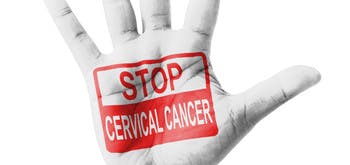Cervical Cancer: Catch it Early
Simple screenings catch the problem before it develops.
Cervical cancer was once one of the most common causes of cancer deaths for American women. But in the past 30 years, the cervical cancer death rate has been cut by more than half. Experts credit this improvement to increased usage of the Pap test, a simple screening that helps identify changes in cervical cells that can lead to cancer, and also helps identify cervical cancer in its earliest, most curable stages.[1] When caught early, cervical cancer is highly curable — and sometimes, it can be prevented from occurring at all.
If you’re a woman age 21 or older, the Pap test should be part of your regular gynecological exams. In March 2012, the American Cancer Society, the American Society for Colposcopy and Cervical Pathology, and the American Society for Clinical Pathology jointly released new cervical cancer screening guidelines that extend the time interval between screening tests for most women. The Delaware Cancer Consortium also endorses these guidelines.[2] (page 105)
In general, women ages 21 to 29 should have a Pap test and pelvic exam every three years, while those 30 and older should have a Pap test, pelvic exam and HPV test every five years, with co-testing every three years. HPV, or the human papillomavirus, is the most common cause of cervical cancer. In fact, nearly all sexually active women — as well as men — will get it at some point in their lifetimes.[3] Your doctor will provide you with more information and personal guidance on the timetable that is right for you.[4]
In addition to getting regular screenings, you can take lifestyle modification steps to reduce your risk of developing cervical cancer. These include quitting smoking, eating a healthy diet that includes fruits and vegetables, maintaining a healthy weight, and practicing safe sex.[5] (page 105)
The Healthy Delaware website can help educate you on the cancer screenings that are right for you, and put you on the right path to a healthier lifestyle. For more information, take a look at our cancer screening chart.
